Looking for a guide to the Phillips Collection? You’ve come to the right place.
The Phillips Collection is a small jewel box of a museum in DuPont Circle. It’s a great place to head if you need a break from the Smithsonian museums and their attendant crowds.
The Phillips was the first museum in America dedicated to Modern Art. It has a breathtaking collection of Impressionist, Post-Impressionist and Modernist art works.
Most of the works are by American artists, which makes the boutique museum an even more unique space.
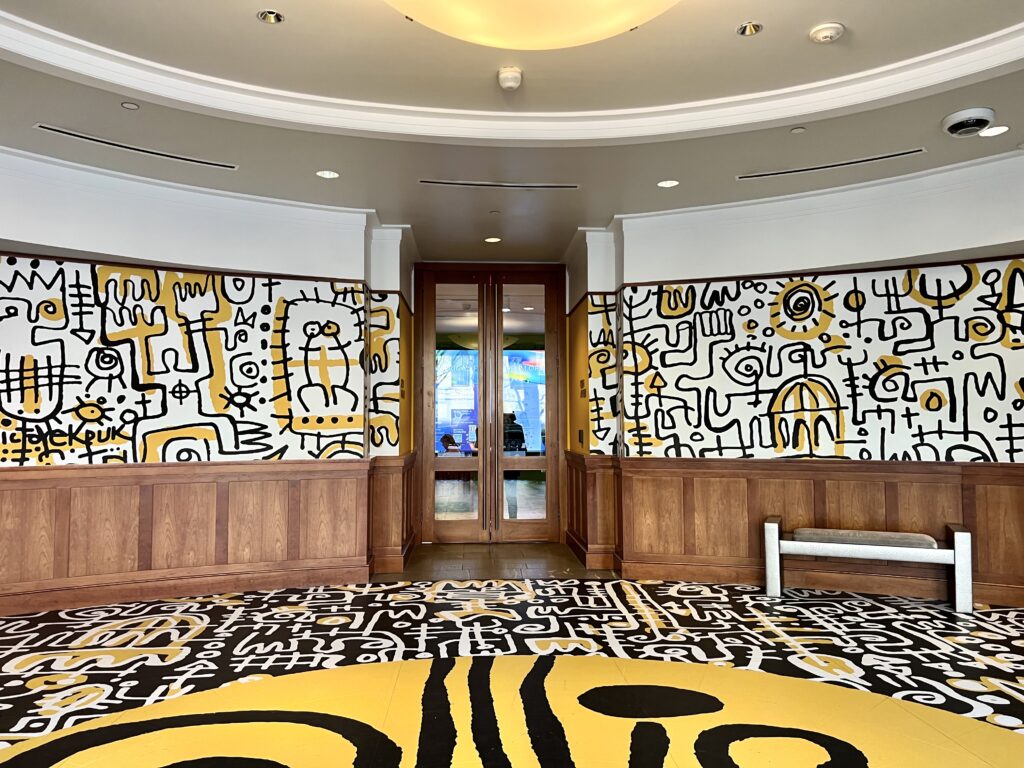
History And Overview Of The Phillips Collection
The Phillips Collection was the brain child of Duncan Phillips. He was an art dealer and scion of a Pittsburgh steel and glass dynasty. He founded the Phillips Collection over 100 years ago.
Unlike other collectors of the time, Phillips did not collect old masters. Instead, he turned his attention to late 19th and early 20th century modern art.
Phillips inaugurated his eponymous museum in 1921, with 237 works displayed in two parlors of his own home. Over the years, his collecting continued. In fact, he had to buy and move into another house to house all his art.
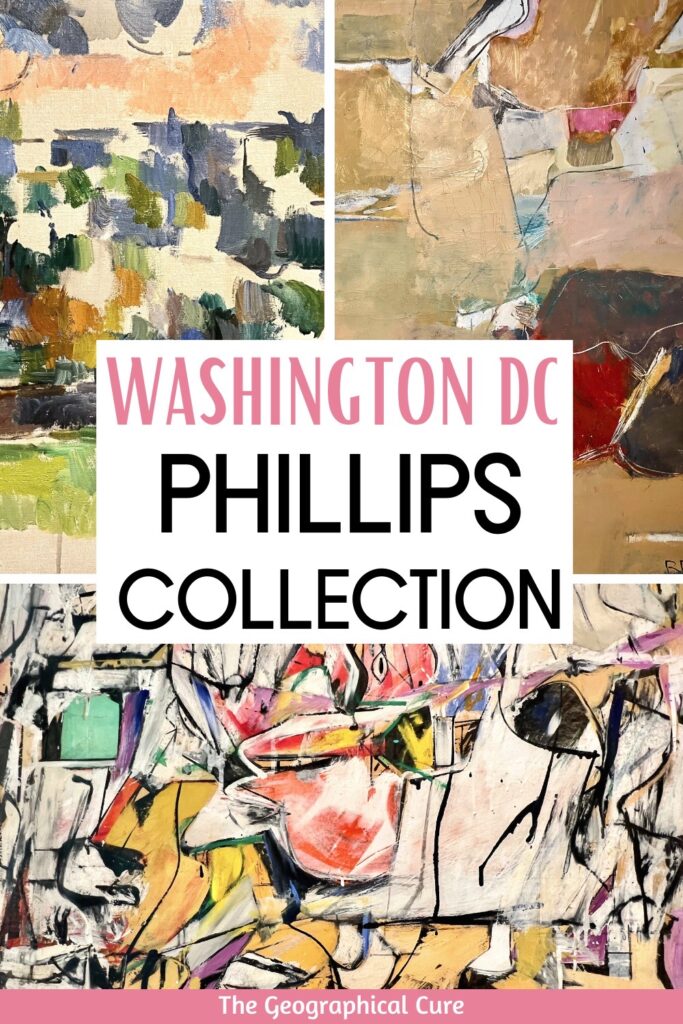
Phillips, much like his American contemporaries Albert Barnes and Isabella Stewart Gardner, had definite ideas about collecting. He wanted to collect the “art of his day,” which he found “life-enhancing.”
That didn’t stop Phillips from branching out a little bit.
He collected some earlier works by Delacroix and Ingres, who he thought influenced his beloved modernists. In later years, he bought works by Thomas Eakins, Georgia O’Keefe, and Edward Hopper.
Upon his death, Duncan bequeathed $3 million to carry on the legacy of the museum.
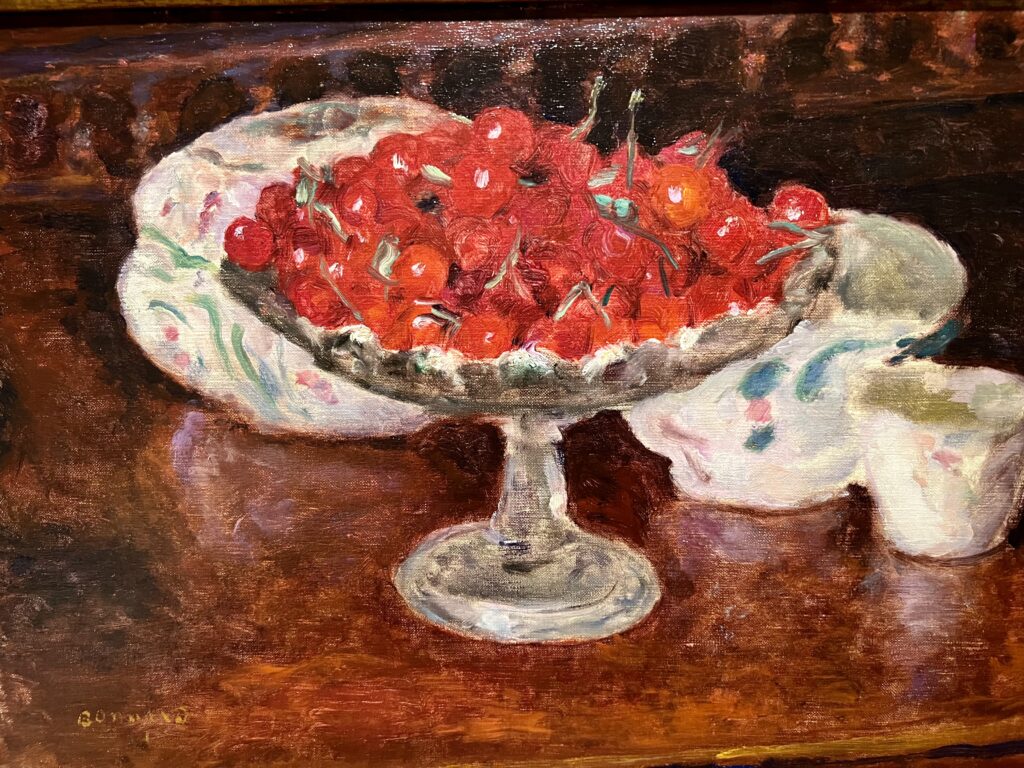
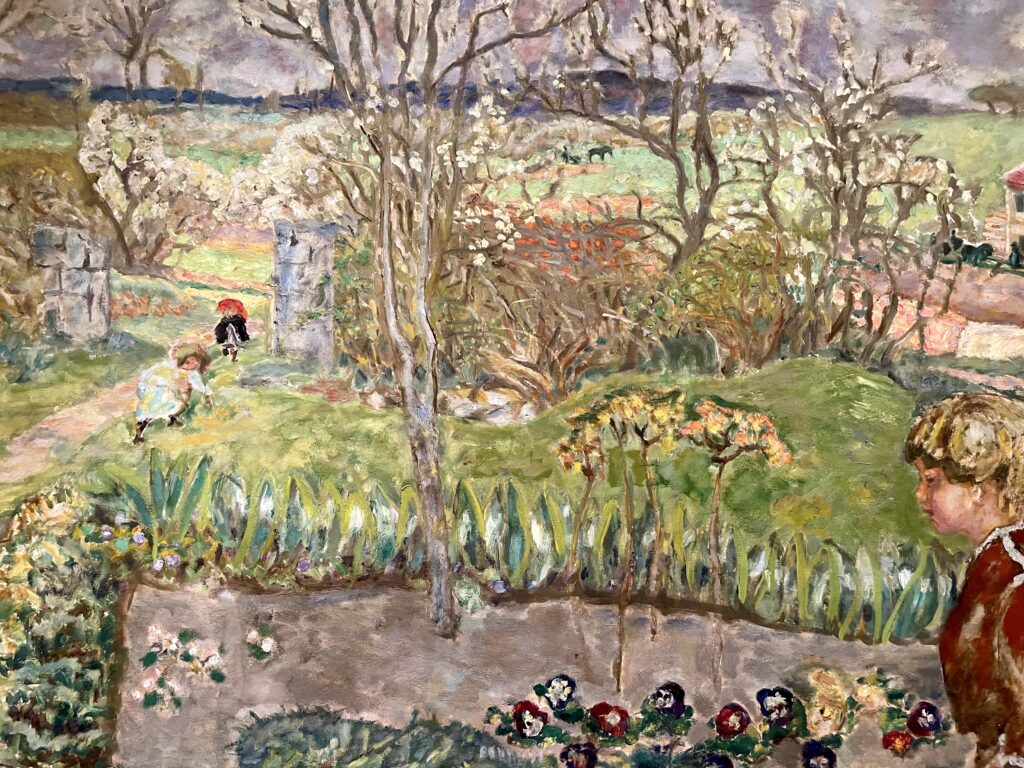
The Phillips Collection is spread out over three floors in two brick-clad Georgian Revival buildings — the museum space and the former house of Duncan Phillips. The latter now also houses the museum’s administrative offices.
The permanent collection contains over 6,000 works of modern art, with an emphasis on American artists.
There is an incredible cache of Post-Impressionism, with works by Pierre Bonnard, Edouard Vuillard, and Paul Cezanne. There are two Vincent Van Gogh’s!
You’ll find pieces by all the most famous modern luminaries — Picasso, Kandinsky, de Kooning, Georgia O’Keefe, Joan Miro, John Marin, Mark Rothko, Arthur Dove, and Piet Mondrian.
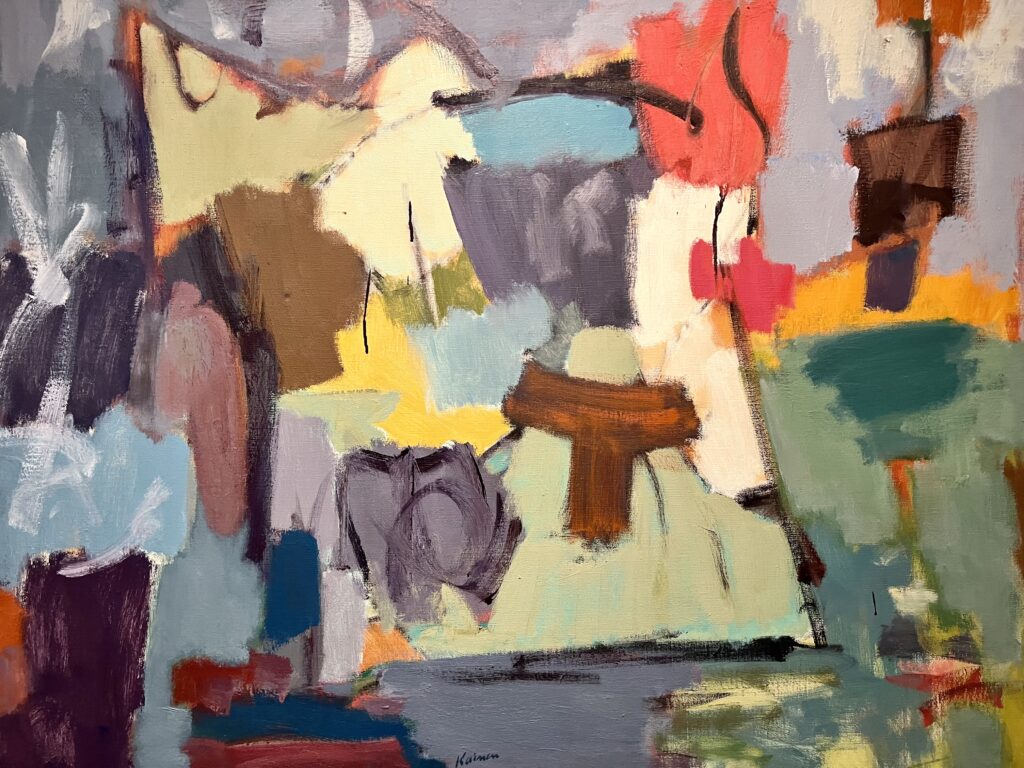
Unlike other small museums, the Phillips is not doctrinaire. It does not suffer from restrictions preventing the art from being loaned or moved in any way.
The museum also collects new works to integrate into the existing collection, keeping its collection fresh.
The Phillips also puts on some fantastic temporary exhibitions. When I was last there, I saw an excellent exhibition on Italian Impressionist painter Giuseppe De Nittis.
There were also some beautiful works on loan by Edgar Degas and Edouard Manet, who were major influrences on De Nittis. The exhibition was so popular that the catalogue was sold out.
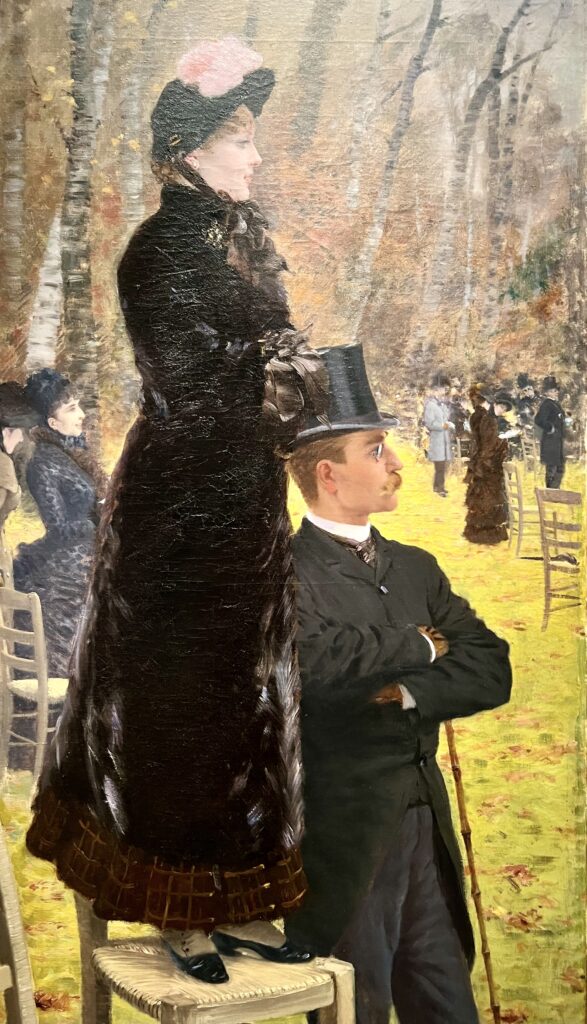
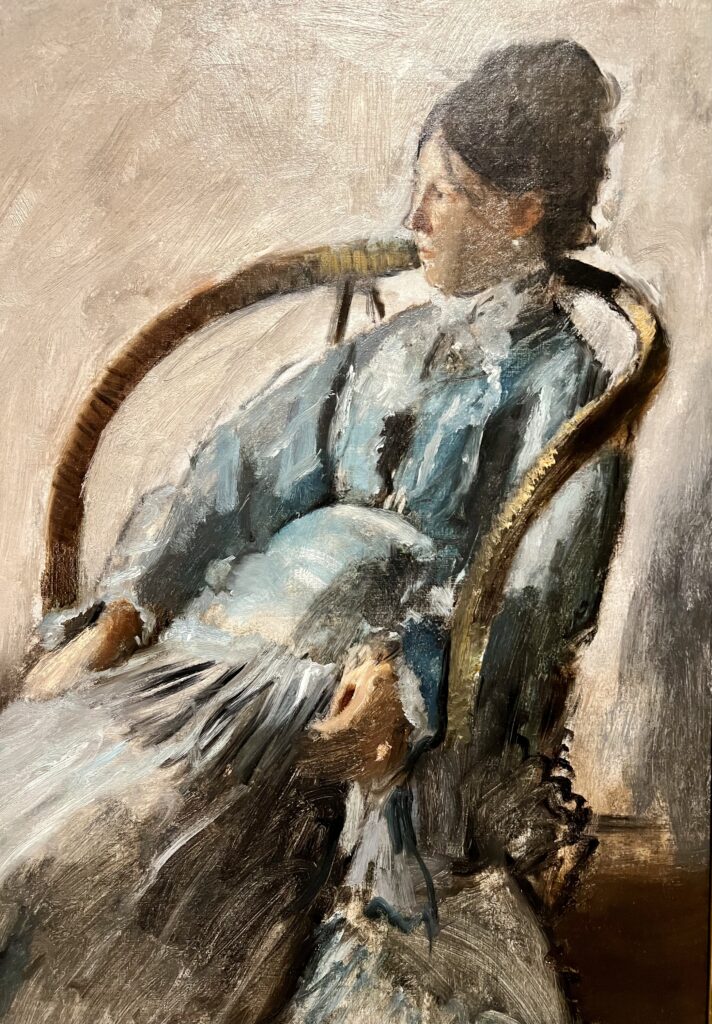
You can pick up a map as you enter the museum. I think it’s best to begin your visit on the third floor where you’ll find the temporary exhibition.
Explore that (if it interests you). Then cross over the bridge, which features beautiful Art Deco-inspired stained glass by Newish Durrett, over to the Phillips House. It was built in 1897 and you can visit two floors.
The red brick house is itself quite handsome. Inside, there are parquet floors, ornate carved stucco ceilings, wood paneling, stained glass, and a plethora of fireplaces.
It’s been renovated to improve the gallery spaces, with light filtering windows, central AC, etc.
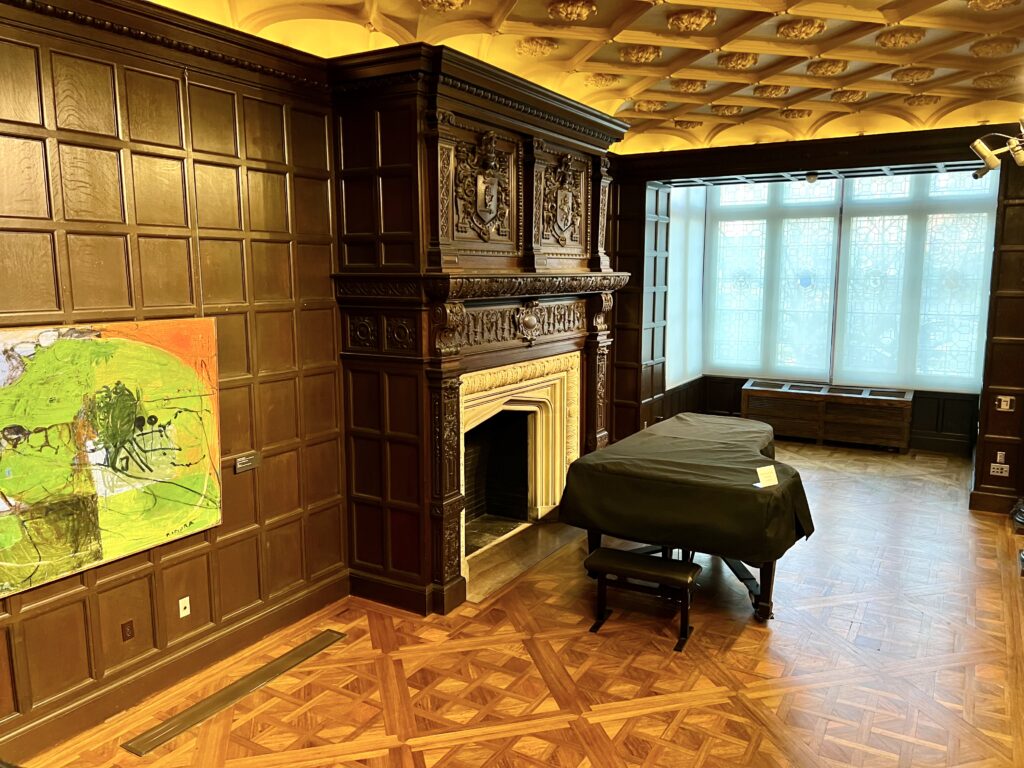
The Music Room is the most grand space. The house also displays much of the collection throughout its rooms.
After exploring the house, head to the second floor galleries. There, you can end your visit amid the museum’s all star masterpieces.
The top highlights are the Rothko Room and Pierre-Auguste Renoir’s Luncheon of the Boating Party. Phillips bought the painting, now worth many millions, for $125,000 in 1923.
In another wing, the museum also houses a library, archives, 180 seat auditorium, and an outdoor sculpture courtyard. These were the result of an expansion in the early 21st century. This is also where you’ll find some of the larger post-WWII pieces in the collection.
Guide To The Phillips Collection: What To See
Here are 15+ masterpieces you can’t miss at the Phillips Collection.
1. Renoir, Luncheon of the Boating Party
This is the museum’s most famous painting and Renoir’s masterpiece. Phillips first clapped eyes on it in 1918. A few years later, he traveled to France to buy it from famed art dealer Joseph Durand-Ruel.
It’s the only Renoir in the collection. Phillips said it “was the only one I need.”
Luncheon of the Boating Party is a joyous work with a complicated compositional narrative. A lot is going on in the ambitious painting, which is 4 feet by 6 feet.
It depicts a lazy and convivial afternoon where the Impressionist artists were gathered at the Maison Fournaise restaurant on Ile de Chateou.
You can see that Renoir was passionately interested in color and human connection.
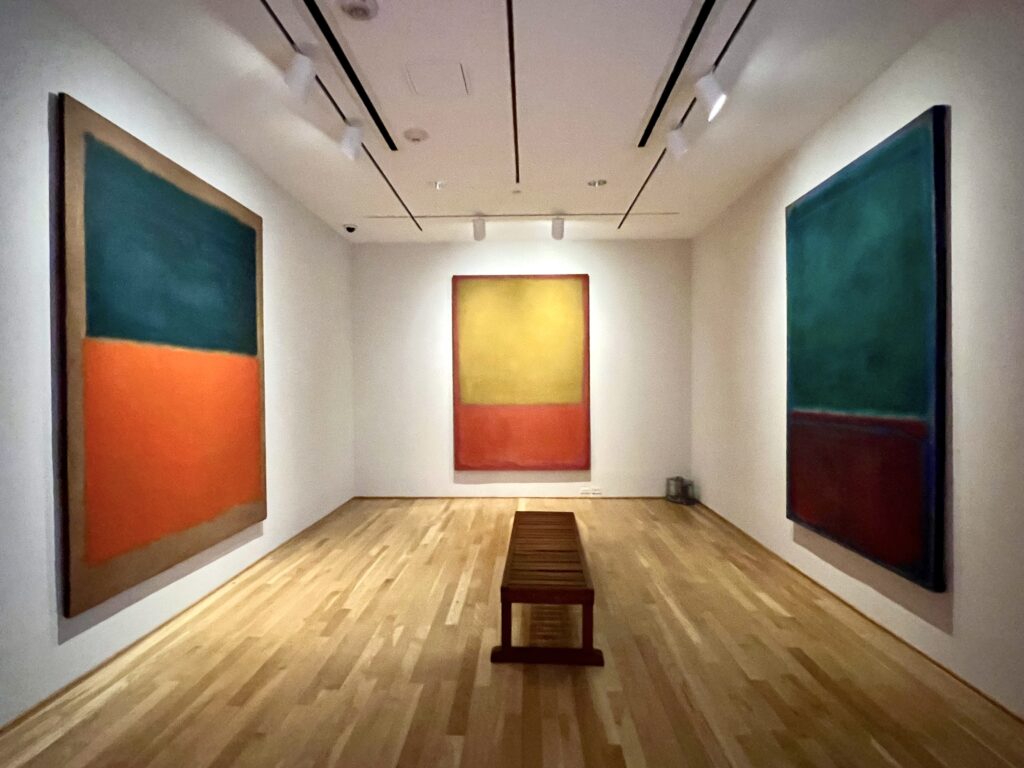
2. Rothko Room
Mark Rothko was a pioneering artist affiliated with the American Abstract Expressionist movement. He’s known for his painterly and evocative rectangles, which the artist said expressed “tragedy, ecstasy, and doom.”
This room was custom built to hold four luminous Rothko paintings acquired by Phillips. They are:
- Green and Tangerine on Red, 1956
- Ochre and Red on Red, 1954
- Green and Maroon, 1953
- Orange and Red on Red, 1957
While Phillips designed the human-scale room, Rothko was also involved in selecting wall colors, lighting, and furniture.
It’s an immerseive experience and you may feel like you’re in another world. You may even have the room all to yourself, which reinforces that feeling.
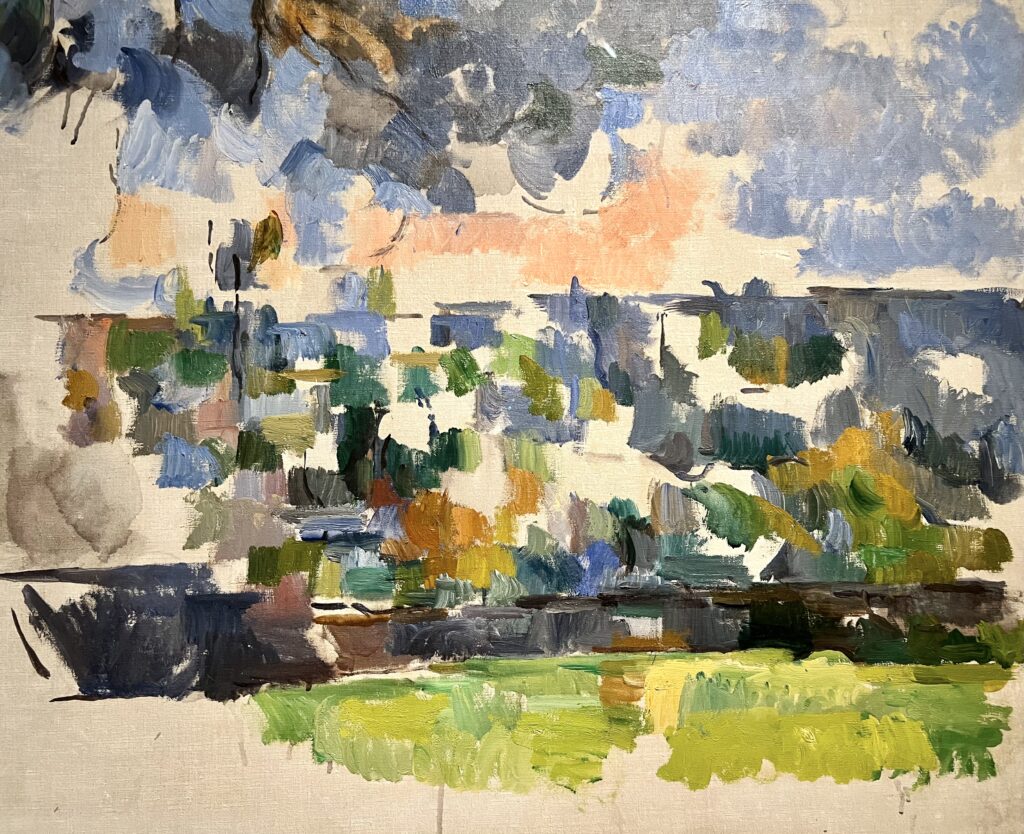
3. Cezanne, Garden at Les Lauves
Cezanne was one of the most influential of the Post-Impressionist artists and the most celebrated artist of the 19th century.
Both Matisse and Picasso claimed that Cezanne “is the father of us all.” Cezanne experimented with composition, geometry, and skewed perspectives.
This enthralling painting was one of Cezanne’s final efforts before his death in 1906. Painted in his studio just outside Aix-en-Provence in southern France, it’s the most abstract of his works.
It’s what the artist called a “construction after nature” with suggestions “based on the model.”
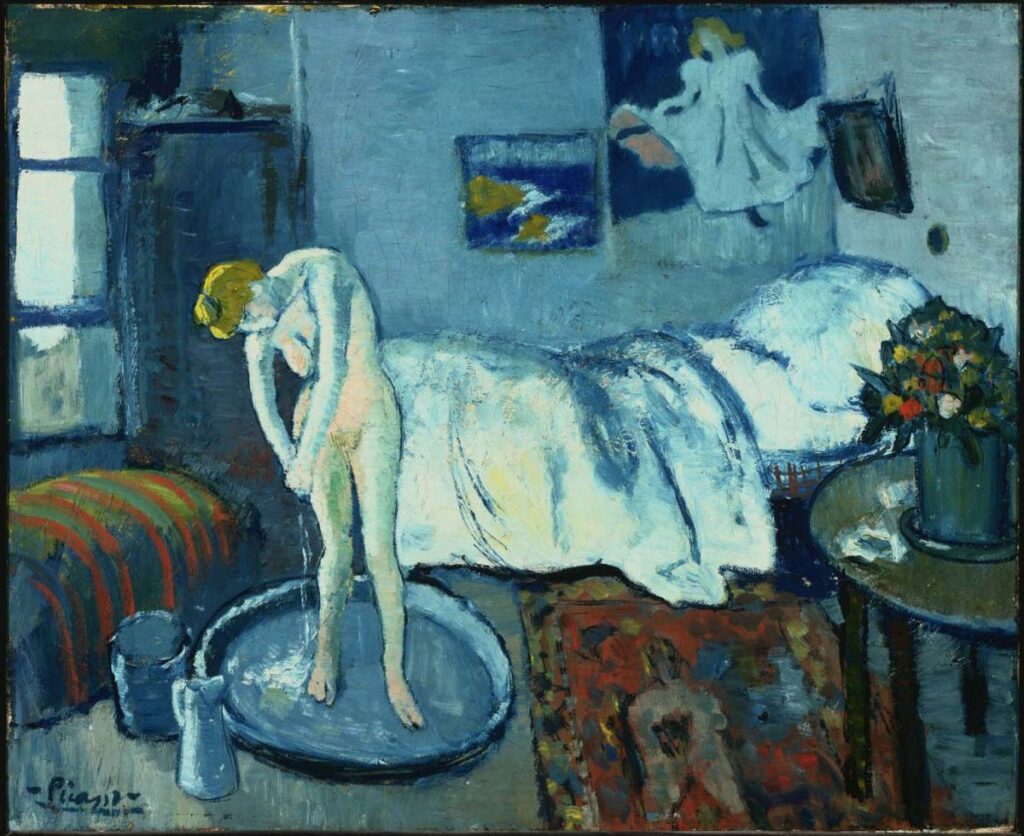
4. Picasso, The Blue Room
This painting is from Picasso’s early Blue Period, created during his stint in the Montmartre neighborhood of Paris. The Blue Period is one of my favorite Picasso periods — full of intimacy, compassion and sympathy for the unfortunate.
This painting depicts a female nude in a shallow tub bending to bathe. She’s isolated against an expanse of different hues of blue.
It’s somewhat more lighthearted than his angsty later Blue Period paintings, which become more and more monochromatic. But it’s still an emotional rendering, a characteristic that attrated Phillips.
The interior scene shows the influrence of both Degas and Toulouse-Lautrec.
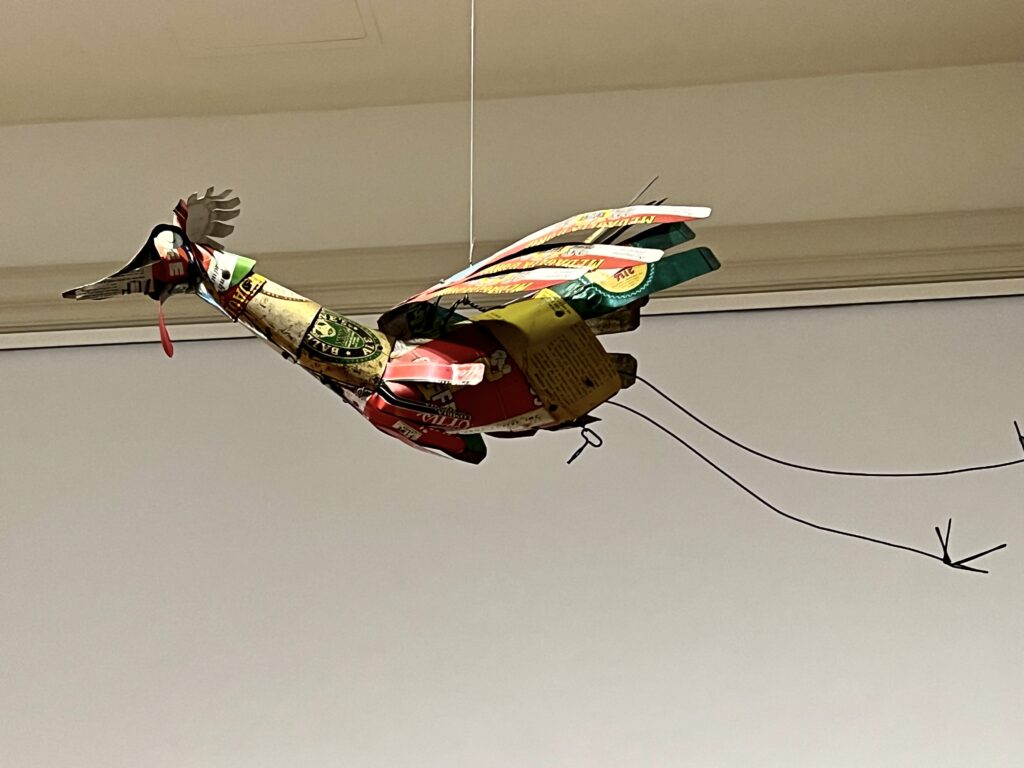
5. Calder Room
Three Alexander Calder pieces have their own dedicated room — Only, Only Bird, Red Polygons, and Hollow Egg.
Calder redefined sculpture by introducing the element of movement. He is best known for his kinetic hanging pieces (called “mobiles”) and his static sculptures (called “stabiles”).
Calder said “Just as one can compose colors, or forms, so one can compose motions.”
This room has two mobiles and one stabile.
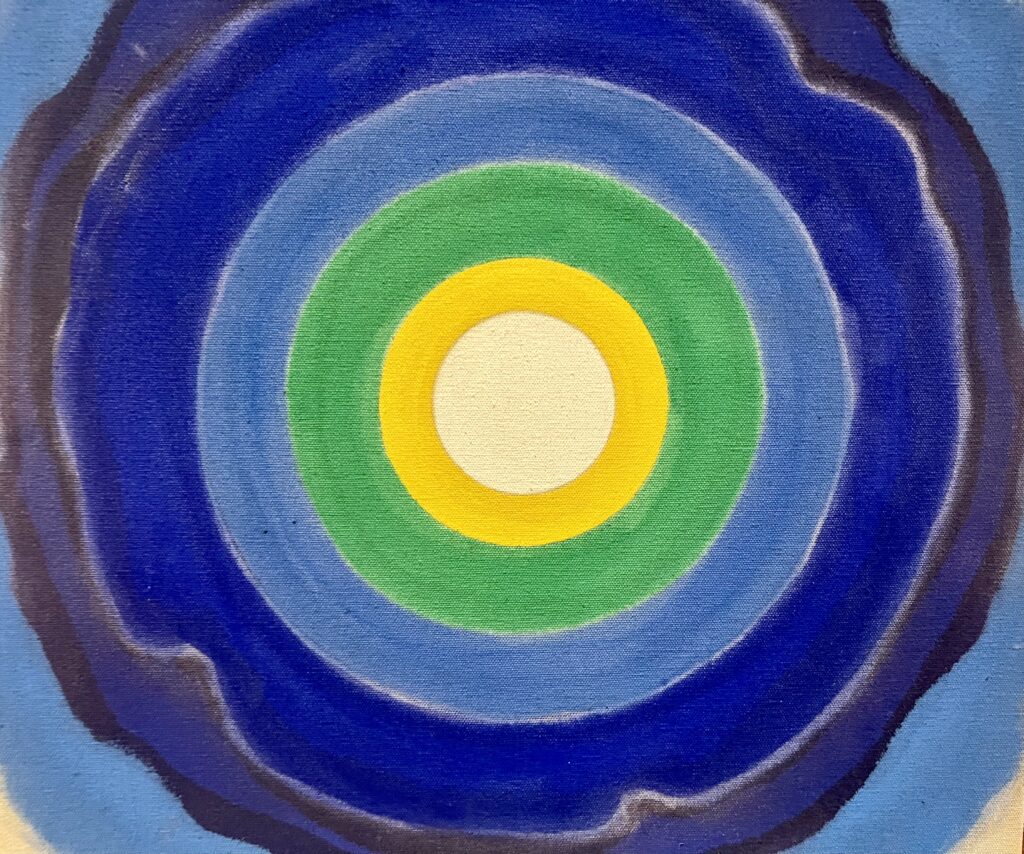
6. Kenneth Noland, April
Kenneth Noland was famous for his mid 20th century Color Field paintings. His paintings have a sharply minimalist style defined by simple compositions of shape and color.
In April, he experimented with “staining,” the process of pouring paint onto umprimed canvases. The resulting circular forms seems to float on the bare canvas.
Noland even credited Phillips with helping him develop this mature style. 5 years later, Noland and his compatriots formed the Washington Color School.
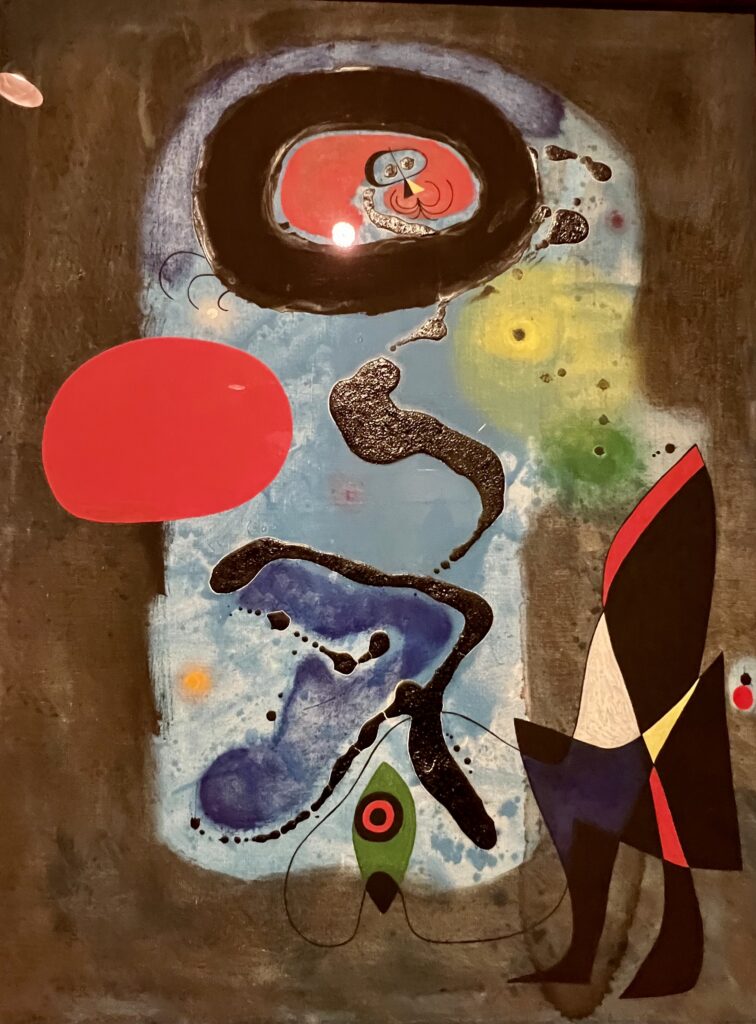
7. Joan Miro, The Red Sun
The Catalan artist Miro was part of the non-objective Surrealist and Biomorphic movements. He was also influenced by Symbolists like Paul Klee.
The Red Sun is an early version of a series of the same name, which became increasingly abstract over time. It’s the only Miro in the Phillips Collection.
Reflecting the artist’s penchant for the “art of the unconscious,” you can see a headless torso, an abstract red sun, and floating misshapen face at the top.
They’re all in his signature bright primary colors and have a dreamy feel.
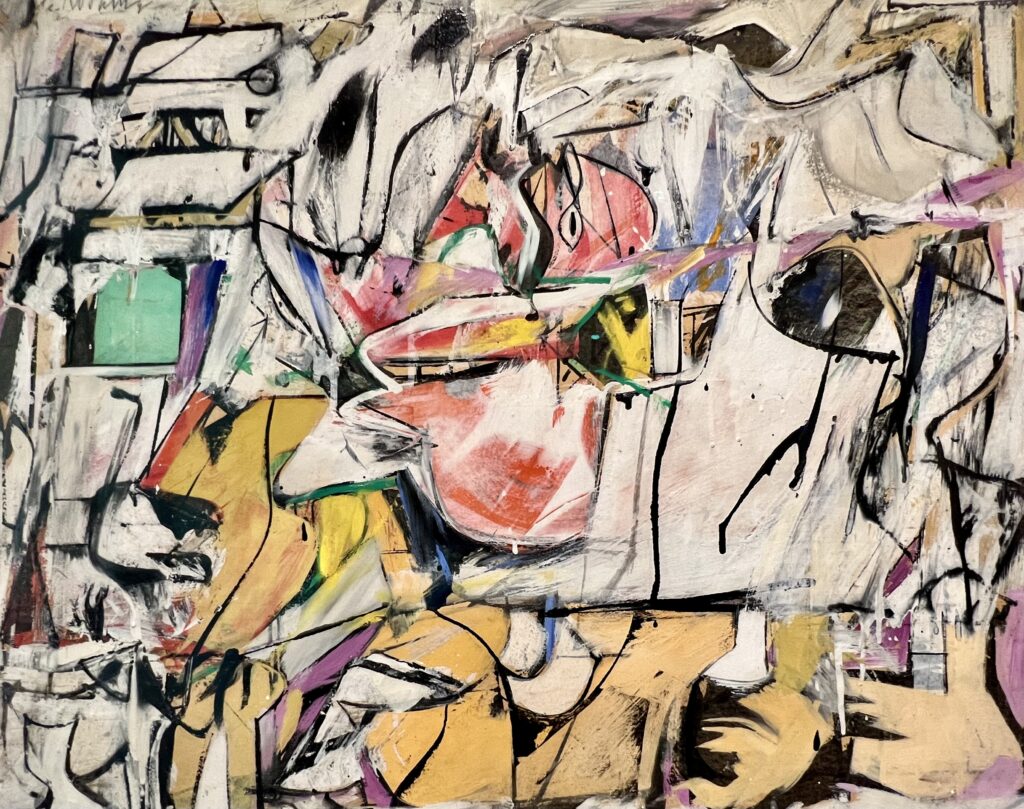
8. Willem de Kooning, Asheville
De Kooning was one of the most famous of the Abstract Expressionists. His style combined Surrealism, Expressionism, and Cubism. He never really gave up depicting the human figure, often an angry woman.
Asheville is named after the North Carolina town where de Kooning was teaching in the summer of 1948. It’s one of his “collage” paintings that blend spontaneity and measured thought.
Asheville shows de Kooning moving into a more abstract style, with a messy and seemingly spontaneous all over pattern. Yet, you can still make out objects that refer to a mountain and fragments of a human face.
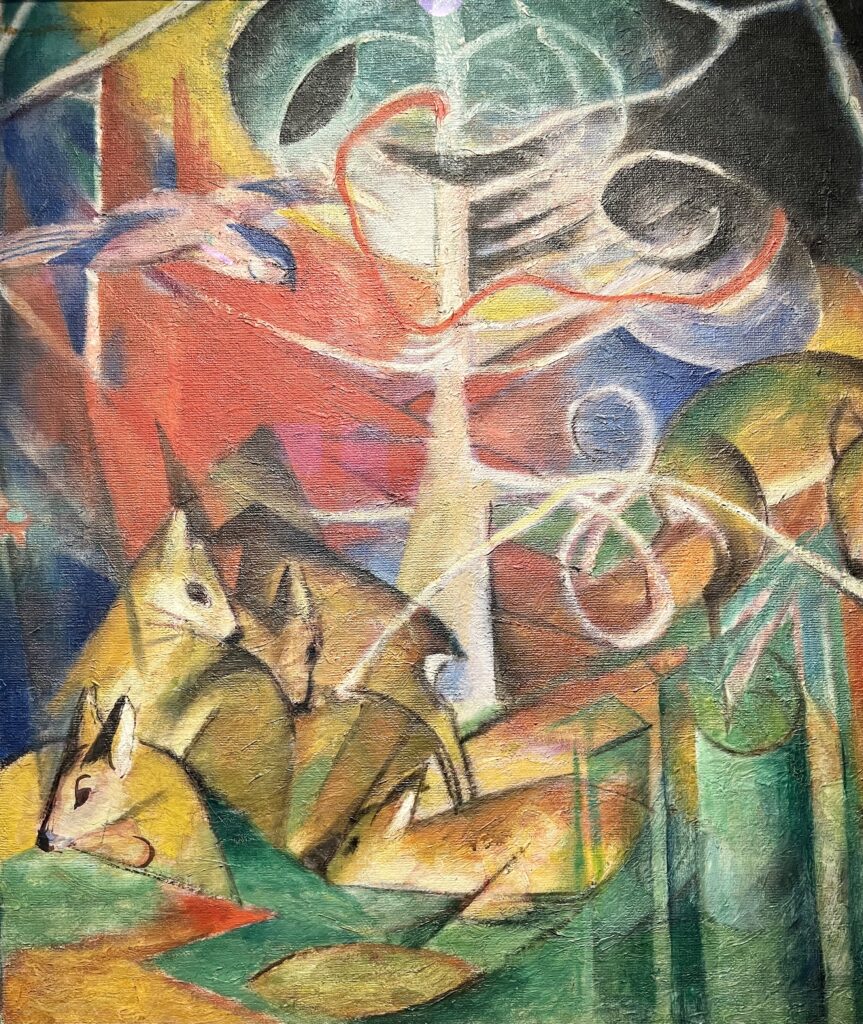
9. Franz Marc, Deer in the Forest I
Franz Marc was part of the German Expressionist movement. His mature style was characterized by abstract forms and bold colors.
The artist loved the natural world, seeing it as an antidote to the modern urban world. His paintings often feature animals like horses or deer.
Deer in the Forest I was painted at the pinnacle of his short career. It depicts his typical simplified but heroic animals, painted in glowing colors in a prismatic pattern.
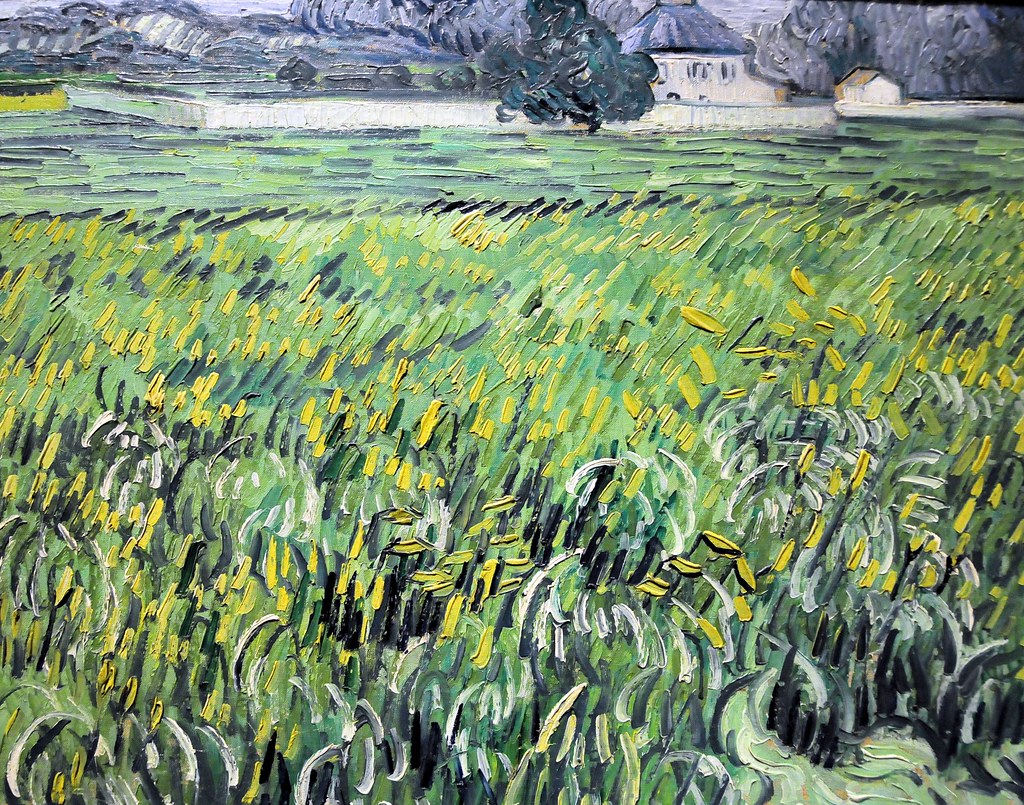
10. Van Gogh, House at Auvers
Van Gogh was a Dutch Post-Impressionism artist who spend most of his life in France. He failed to sell a single painting in his lifetime. But now he’s considered one of the greatest and most influential painters in art history.
Van Gogh’s work is notable for its swirling line, emotional honesty, and bold vivid color. His radical landscapes are intense and exude raw emotion.
House at Auvers reflects that style. It was painted in the artist’s final year of life, when he had moved to the town of Auvers outside Paris.
Van Gogh’s staccato brushstrokes of the fields create an almost foreboding sense of dread. The fields almost engulf the house in the high background, suggesting the artist’s mental struggles.
It’s not one of his best paintings. (They’re in Paris’ Musee d’Orsay.) Still, it’s always fun to see a Van Gogh.
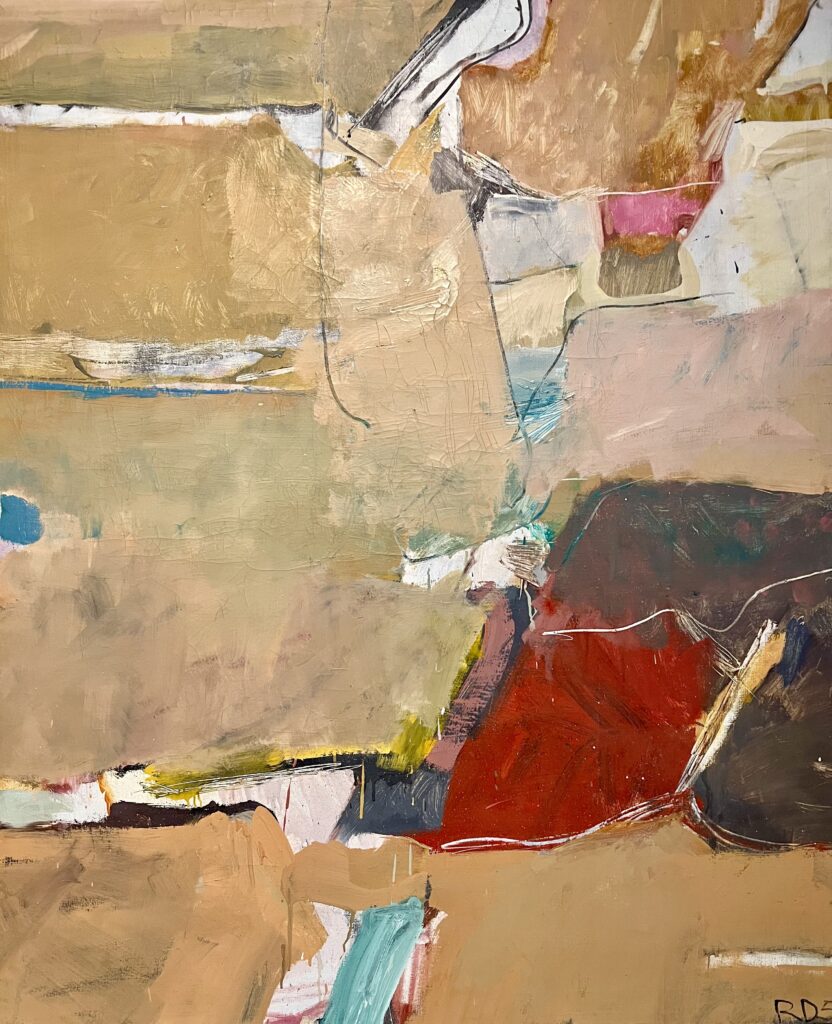
11. Richard Diebenkorn, Berkely No. 12
Richard Diebenkorn became famous even though he didn’t apply his trade in New York City. Instead, in the 1950s, he became the face of the California school of Abstract Expressionism.
I’ve always loved his work, which would shift between figurative and abstract subjects. His inspiration came from American landscapes. He used soft hued color and light to create his spaces.
Berkely No. 12 is one of 60 abstract paintings Diebenkorn made while living in Berkeley, California from 1953-56. It combines the warm dusty palette of his former home in New Mexico with the blue colors of the San Francisco Bay.
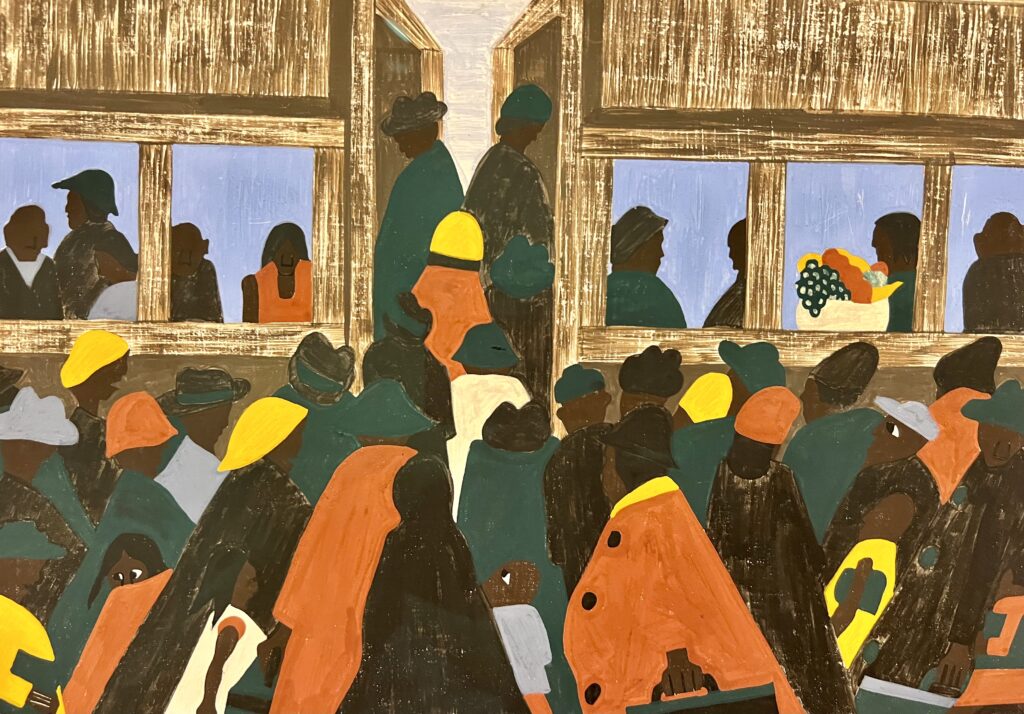
12. Jacob Lawrence, The Migration Series
Jacob Lawrence was an Expressionist artist famous for his depictions of everyday life and narratives of African American history. He liked to use vivid colors set against black and brown figures.
Lawrence conceived of the idea for his Migration Series in 1940. He wanted to portray the time period when African Americans moved in droves from the rural south to the industrialized north in search of a better life.
No one had ever painted this subject before. With a grant, the young artist produed 60 panels portraying the great migration.
In 1942, half the panels were sold to the Phillips Collection and half to the Museum of Modern Art in New York City.
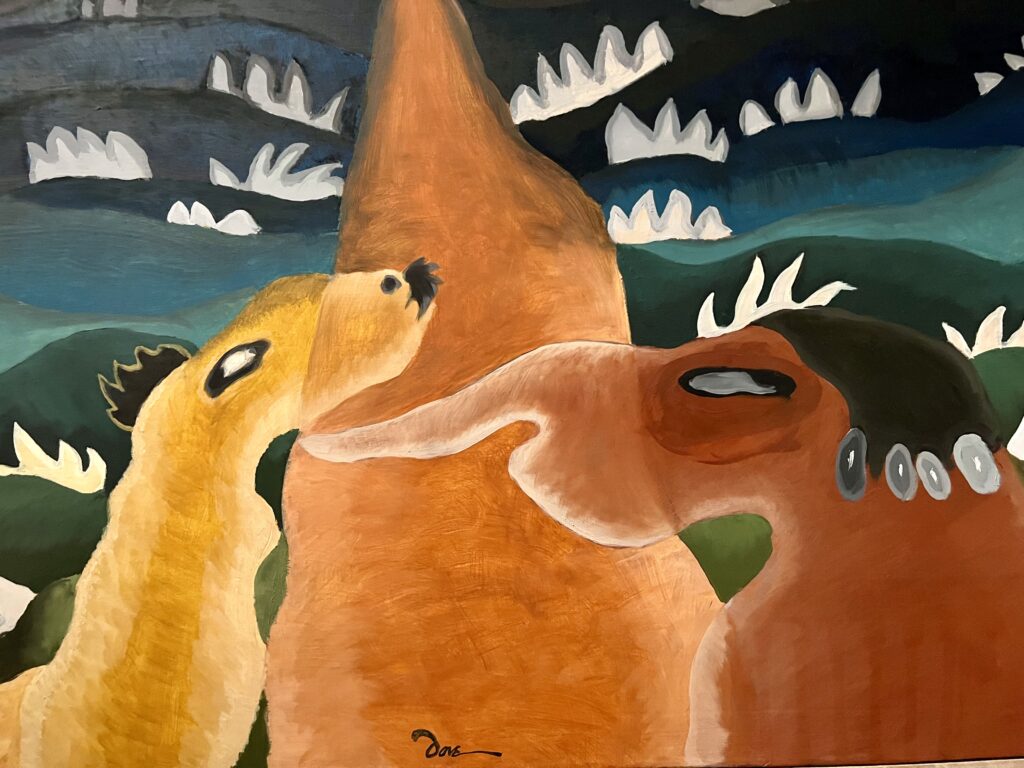
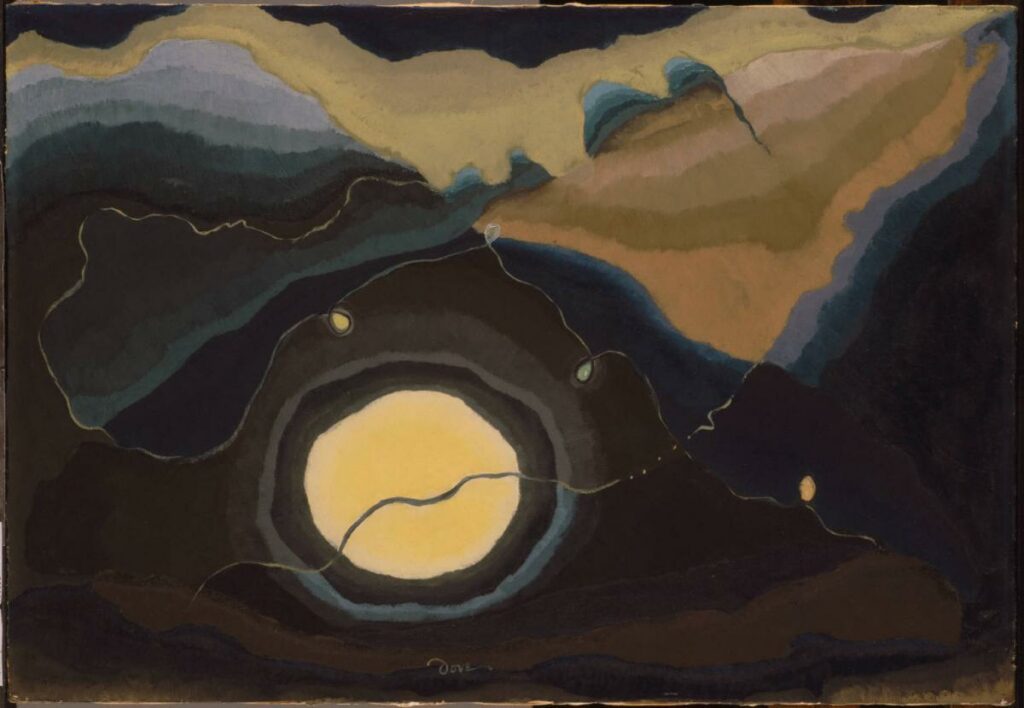
13. Arthur Dove Paintings
The Phillips Collection has a veritable treasure trove of 56 Arthur Dove paintings. Dove and Phillips had one of the productive artist-patron relationships of modern times.
Dove was a pioneering American artist who, like Franz Marc, liked to escape into the timeless of nature.
Artistically, he broke away from strictly narrative art, creating works that were innovative and often abstract in terms of their style, color, composition, and forms.
The best works in the Phillips Collection include Red Sun, Waterfall, Rain or Snow, Sun Drawing Water, Golden Storm, and the two paintings pictured above.
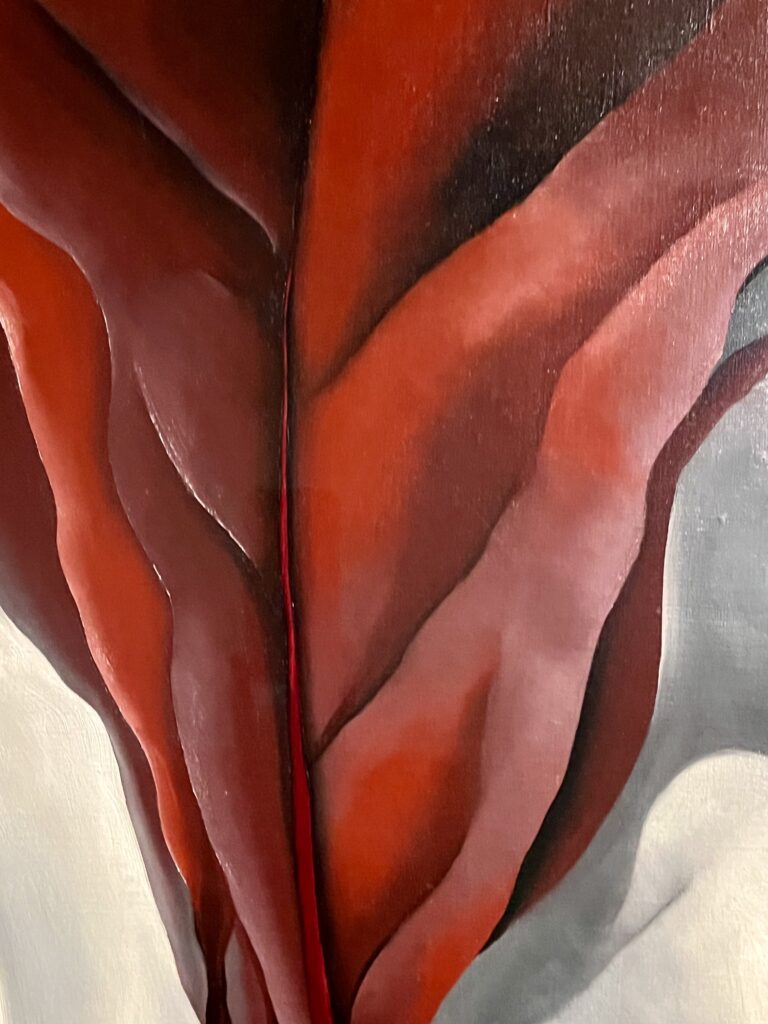
14. Georgia O’Keefe, Large Dark Leaves on White
The Phillips has six O’Keefe paintings. At the moment, they are mostly on display in the Phillips House.
Over her illustrious career, O’Keefe captured the power and emotion of objects by abstracting them from nature. She was the first female American modernist and always focused on a fusion of abstraction and realism.
My favorite of her paintings at the Phillips was Large Dark Leaves on White. It’s a piece painted early in her career.
A set of smooth dark leaf forms stand upright against a blank abstract white and gray setting. They are slightly cropped and fill the entire canvas.
This work is a glimpse of the future sexually-charged images O’Keefe is best known for, although she consistently refused any link.
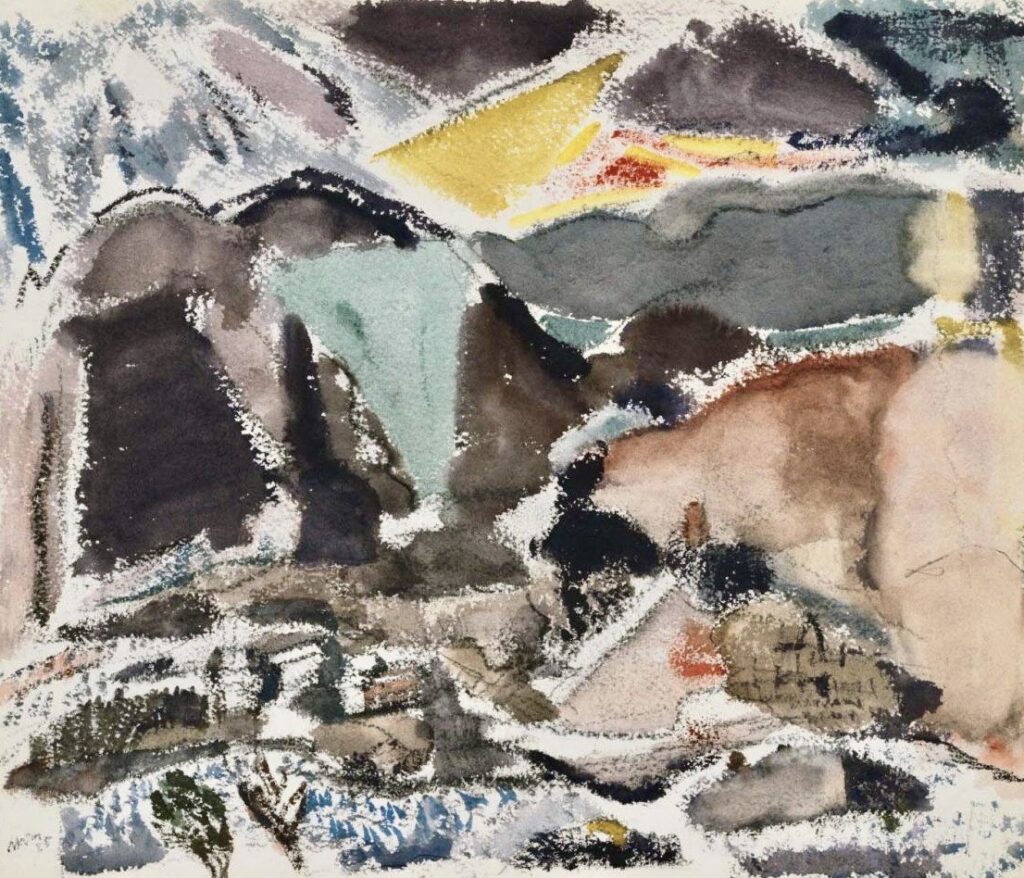
15. John Marin, Back of Bear Mountain
Along with Arthur Dove, John Marin was an icon among American modernist painters. And the artist does not always get his due as an innovator.
Influenced and supported by Alfred Stieglitz, Marin was one of the first Americans to use abstraction in his watercolors of expressionistic landscapes and street scenes.
He wanted to convey emotion, and did so long before the Abstract Expressionists arrived on the scene.
Bear Mountain is a peak in New York’s Hudson Highlands. The painting has broad patches of vivid color with linear contours that suggest motion and energy.
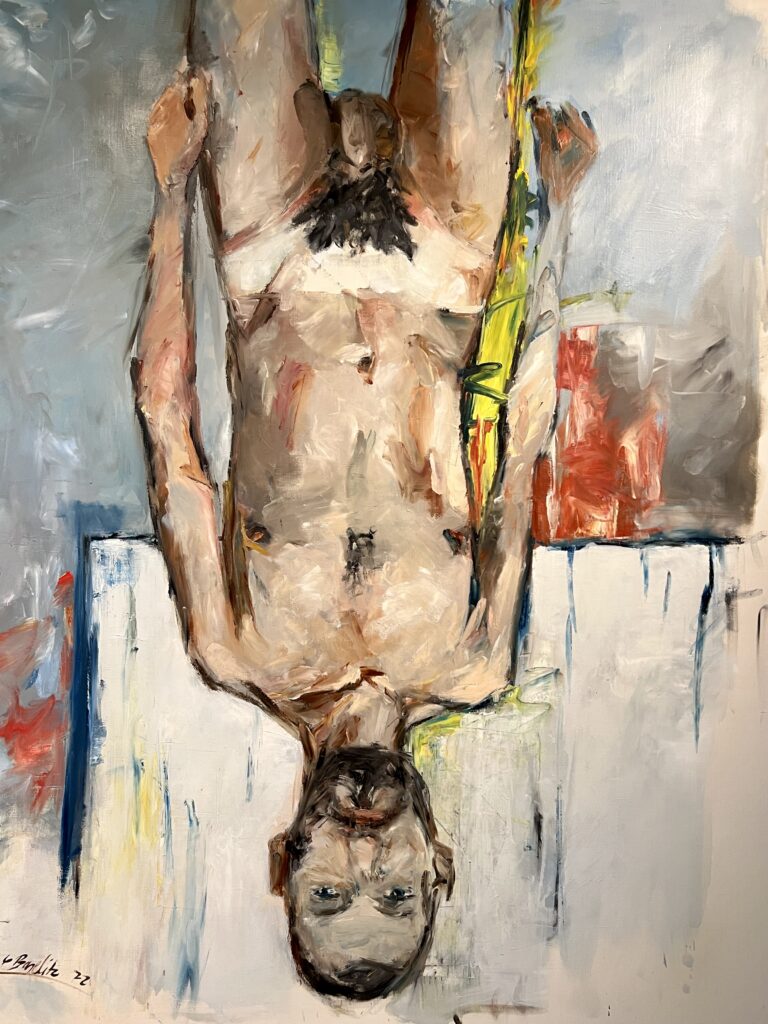
16. Georg Baselitz, Fingermalerai Akt
Baselitz was a rare mid 20th century post WWII artist who rejected abstraction and embraced aggressive and symbolic representational art. He influenced the Neo-Expressionism movement of the 1970s.
He would often paint grotesque figures upside down on blank fields or in scenes of destruction. It became his trademark feature.
The Phillips’ piece fits within this genre. A nude man is inverted, depicted upside down with a rather shocking appearance.
Baselitz used this topsy turvy style to slow down his own painting and that of the viewer’s perception of the painting. It’s hard not to have a visceral reaction to it.
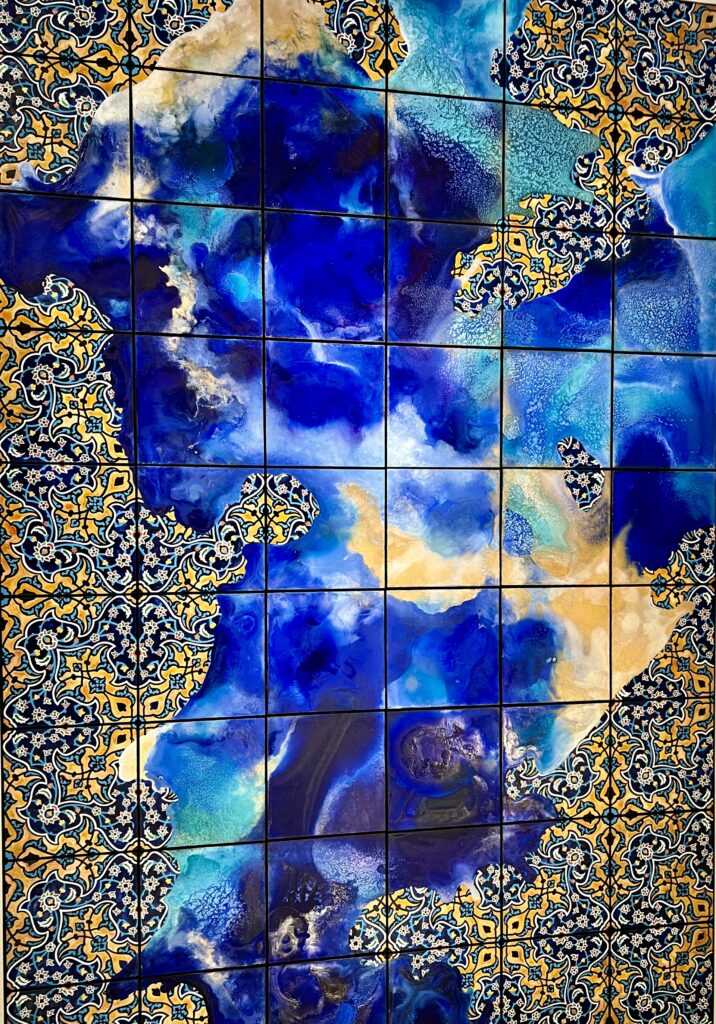
17. Ilchi, Something Discernible in the hollow space of its absence
This is a very recent Phillips contemporary art acquisition, found in the Phillips House. It’s by D.C.-based artist Hedieh Javashir Ilchi.
The work was created with acrylic paint on Masonite panels. It’s a study in duality — Western painting vs. Islamic tiles, abstraction vs. representation, and depth vs. flatness.
As an Iranian-American immigrant, Ilchi says the work reflects her own multi-faceted history.
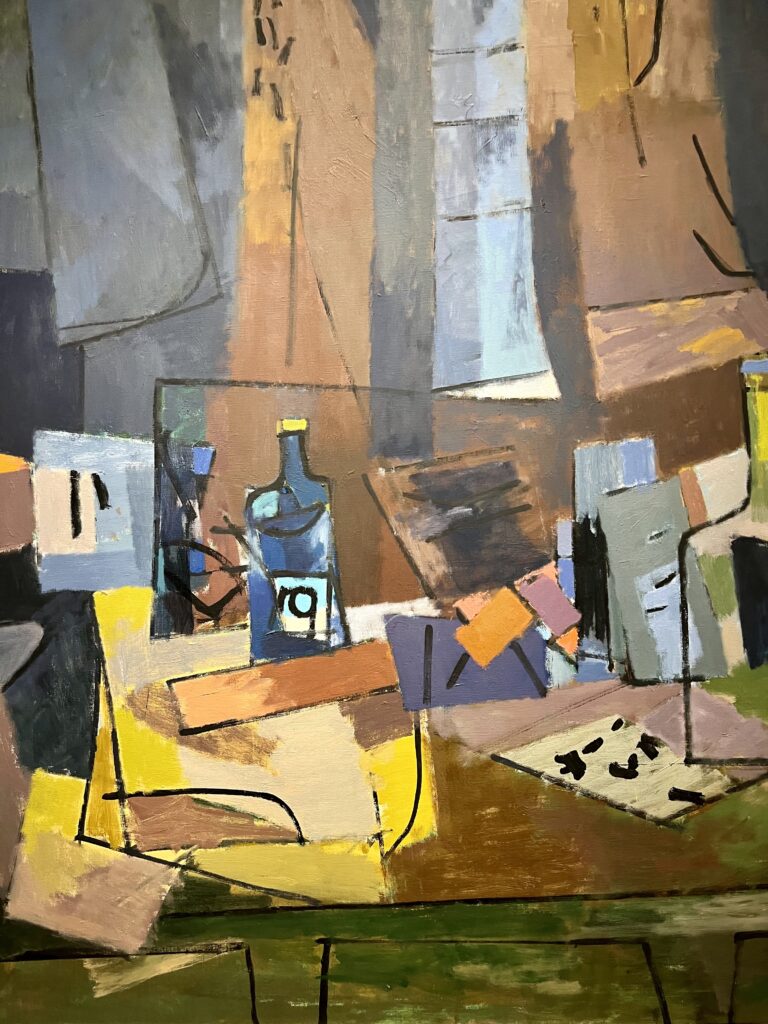
Practical Guide & Tips For The Phillips Collection
No guide to the Phillips Collection would be complete without some must know tips for visiting.
Address: 1600 21st Street NW. The Georgeian Revival style museum sits on a tree-lined street in the tony DuPont Circle neighborhood.
Hours: Open daily from Tuesday through Sunday from 11:00 am to 6:00 pm
Tickets:
You should book a timed entry ticket online on the museum website. Tickets are $16 and include admission to both the permanent collection and temporary exhibition.
You may be able to walk in without a ticket in the winter. But in the summer, you should make a reservation.
Metro: DuPont Circle metro
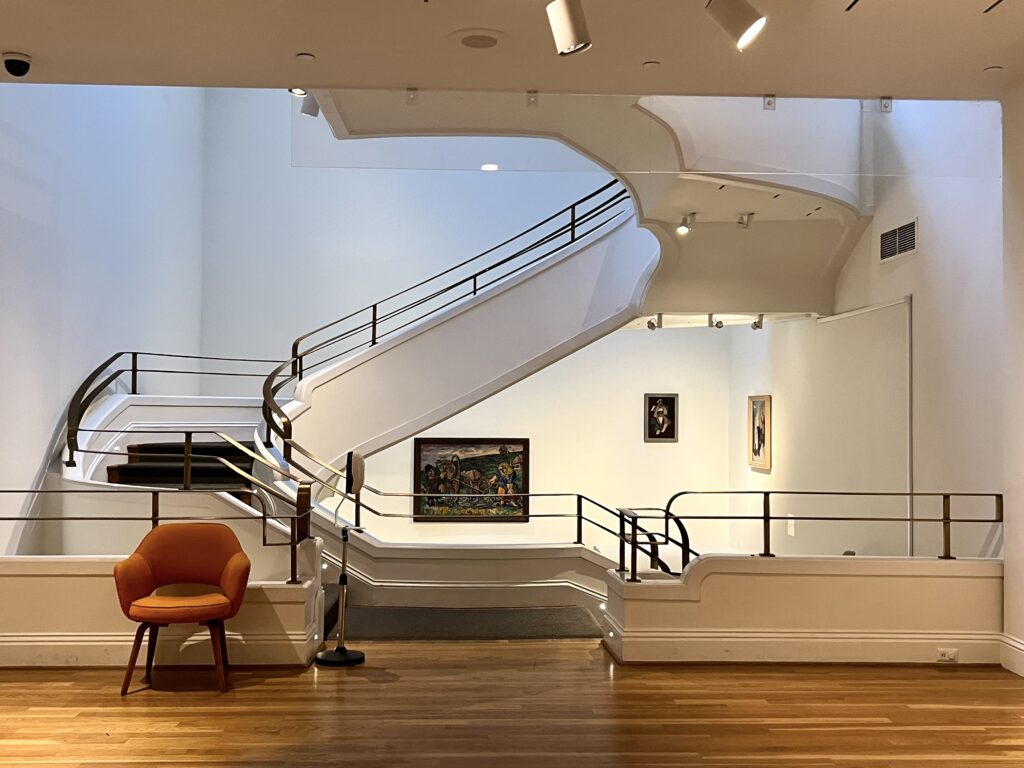
Pro Tips:
You should also check the Phillips’ event calendar. The museum hosts a concert series, lectures by artists, and popular after 5:00 pm evening of art on the first Thursday of the month.
Try to visit the museum mid-week if you can. It will be less crowded.
I visited on a Wednesday in February. It was the most crowded museum I visited in D.C., save for possibly the National Gallery of Art.
In particular, the special exhibtions can be crowded, attracting both newbies and connoisseurs alike.
The museum is deserving of repeat visits. You will find different works from the permanent collection on display or shown in different places. If you are pining to see a particular painting, the museum website will indicate whether it’s on display or not.
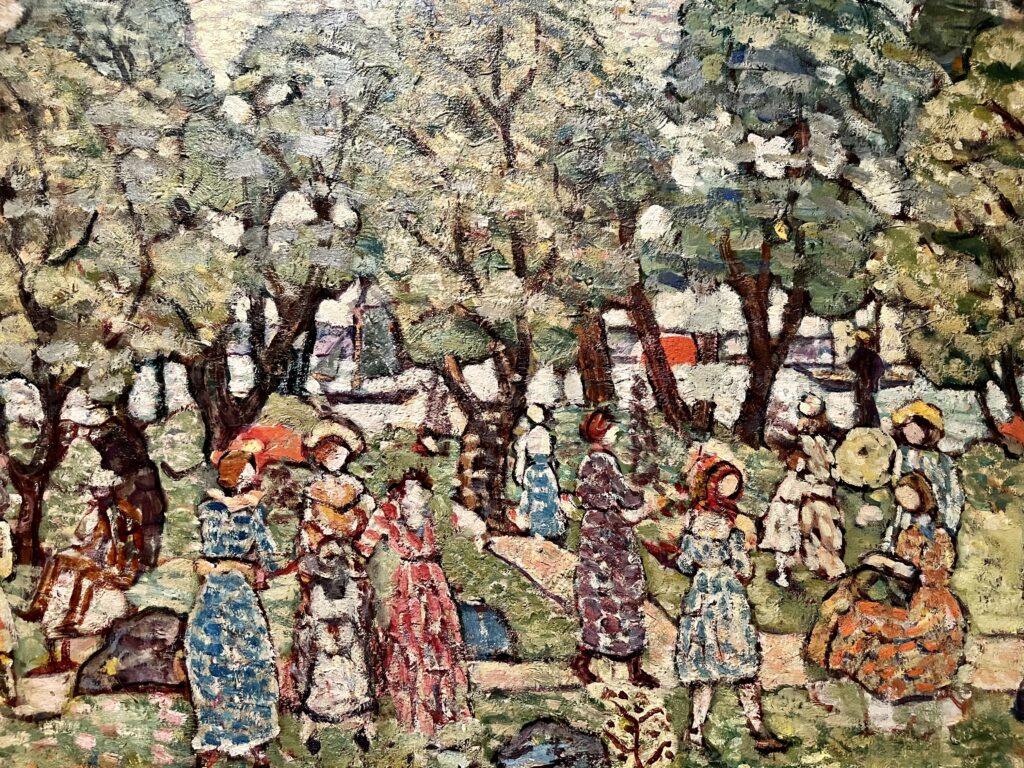
To get detailed information on the paintings, you can scan a QR code and download the Bloomberg App. Then, punch in the number of the painting for a full description.
The docents are also incredibly helpful and can give you any tips or information you might need.
If you are just visiting to see the permanent collection, you should budget 1 to 1.5 hours. If you are seeing the temporary exhibiton as well, budget 2-2.5 hours. Parking on the street can be hard to find and is limited to 2 hours, so keep that in mind.
The museum has a small cafe, the Vradenburg Cafe. You can have brunch or sample an array of sandwiches, salads, and pastries.
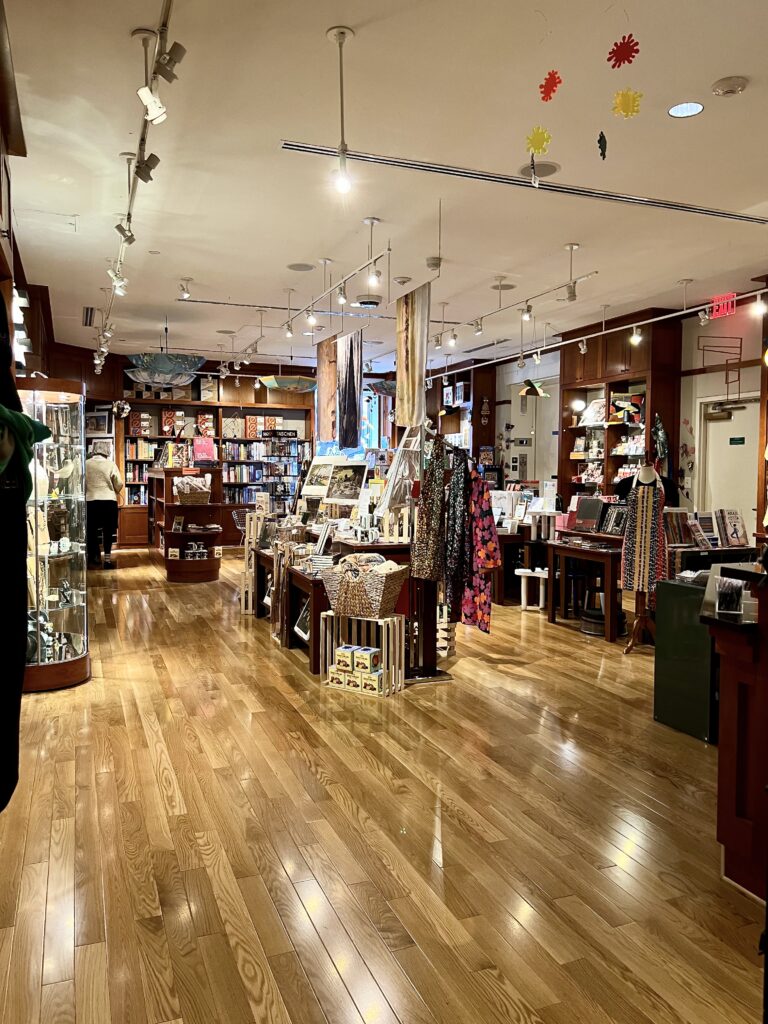
Is the Phillips Collection Worth Visiting?
100% yes it is, but then I have a soft spot for exquisite small museums like this.
To my mind, the Phillips Collection is definitely one of the world’s best small museums. It’s a place where you can admire and enjoy first rate paintings in an intimate home-like setting.
I hope you’ve enjoyed my guide to the Phillips Collection. You may enjoy these other DC and US travel guides and resources:
- Fall foliage around Washington D.C.
- 2 days in Washington D.C. itinerary
- Guide to the National Gallery of Art
- Guide to the Holocaust Museum in D.C.
- Hidden Gem Towns on the East Coast
- 10 day itinerary for coastal Maine
- 7-10 day itinerary for Vermont
- Fall foliage road trip in New England
- 2 week itinerary for the American Southwest
- 10 day itinerary for southern California
- 25 most beautiful towns in New England
- 45 amazing destinations in the United States
- Best places to visit in Massachusetts
If you need a guide to the Phillips Collection, pin it for later.
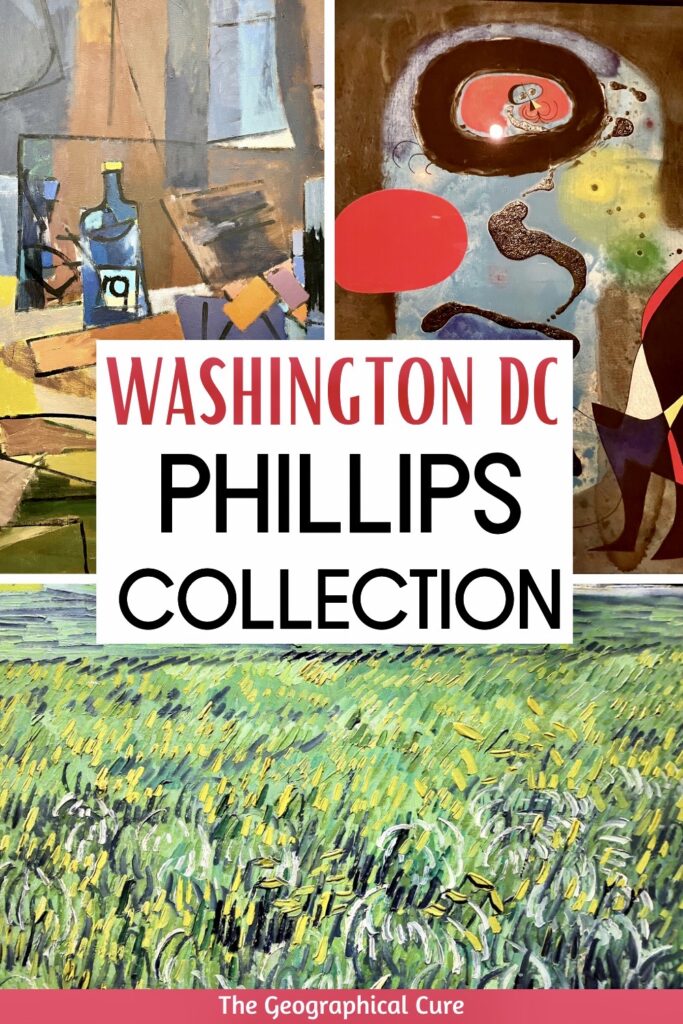

Lovely overview. Evocative language.
Thank you Beth. Amazing museum.